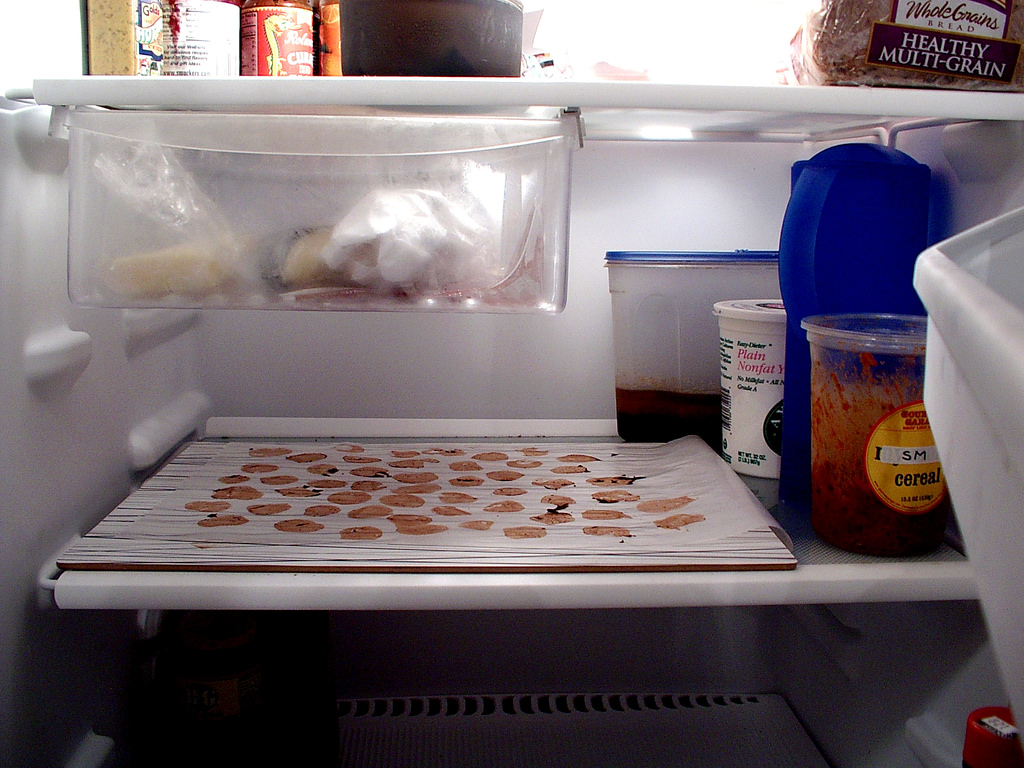What's Lurking in Your Refrigerator?
 Danger! Your refrigerator may be a breeding ground for mold and bacteria. The recommended setting for refrigerators is 37-39 degrees Fahrenheit, which inhibits some bacterial growth. However, many types of bacteria thrive at low temperatures. Given the right circumstances -- temperature, nutrients, air, and moisture -- bacteria can grow very quickly in your refrigerator. Also, all jokes about penicillin experiments aside, once mold begins to grow on one item, it can migrate to other foods.
Danger! Your refrigerator may be a breeding ground for mold and bacteria. The recommended setting for refrigerators is 37-39 degrees Fahrenheit, which inhibits some bacterial growth. However, many types of bacteria thrive at low temperatures. Given the right circumstances -- temperature, nutrients, air, and moisture -- bacteria can grow very quickly in your refrigerator. Also, all jokes about penicillin experiments aside, once mold begins to grow on one item, it can migrate to other foods.
Ask yourself these questions:
1. Do you clean inside your refrigerator every one to two weeks?
2. Do you make sure there are no drips or food on containers you're placing in the fridge?
3. Do you avoid opening the refrigerator door frequently, especially on hot, humid days?
4. Do you clear out older leftovers and expired foods whenever necessary?
5. Do you cover cooked foods before you place them in the refrigerator?
The answer to all these questions should be "yes," for proper food handling practices.
How to prevent unsanitary conditions in your refrigerator:
Like Goldilocks, mold and bacteria generally prefer temperatures that are not too hot or too cold. If you allow food to sit out for extended periods (2 hours is the "safe window"), bacteria will grow. Putting the food in the refrigerator after significant contamination won't do much to prevent food poisoning. In addition, if the weather is warm, you are also likely to end up with insects or their eggs in your food.
When you've just cooked a big batch of hot food such as a pot of soup, store in the refrigerator ASAP. Help it cool down faster in one or more of these ways:
- Place the cooking pan in a cold water or ice bath.
- Add ice cubes to the contents of the pot.
- Transfer the food into several shallow storage containers.
Clean your refrigerator frequently, at least every one to two weeks. Scrub down the shelves, drawers, and walls with a disinfectant or mild bleach solution.
Be aware of the temperature inside your refrigerator. If the door is opened a lot, the temperature will increase, putting your food at risk. Monitor fridge temperature with a special thermometer. If the refrigerator is consistently too warm or too cool, you might want to hire a handyman to adjust the temperature.
How old is too old?
Raw poultry and ground meat should never be left in the refrigerator longer than one to two days, while other cuts of meat, including fresh beef, veal, lamb, and pork, will be good for 3-5 days. Cooked leftovers should be thrown out after four days tops.
Keep your meats and poultry in plastic bags as they may have already been contaminated with molds and bacteria if they were improperly processed or packaged.
Keep in mind that your food is decaying while it is in the refrigerator – just at a slower rate. Also, even if your food is in the freezer for a long time, it will still deteriorate. It may not become toxic, but it sure won’t taste good. Foodsafety.gov provides a handy chart for maximum safe food storage periods.
Should foods in the refrigerator be covered?
An unequivocal yes – food in the refrigerator should always be covered. Besides being prone to drying out or absorbing unpleasant odors, uncovered foods are susceptible to cross-contamination or dripping condensation.
Foods you are storing in your refrigerator are best kept in airtight containers. Plastic wraps and aluminum foil can add to condensation, but are not harmful for short-term storage. In a pinch, at least put the food in a bowl and cover it with a dish.
Updated March 14, 2018.
Looking for a Pro? Call us (866) 441-6648

Cleaning Average Costs
Cleaning Services Experiences

Staining And Clear Coating To Fix Up My Late Parents’ Home

New Asphalt Roof For My House And Shed After A Storm Blew Off 21 (!) Shingles



